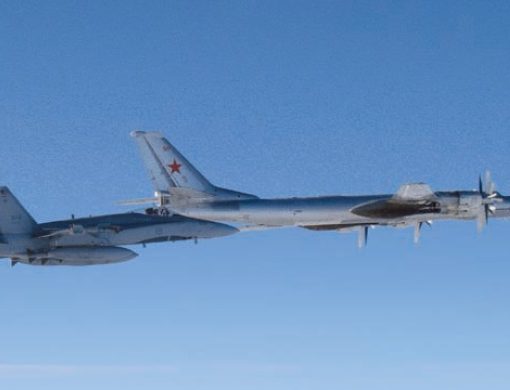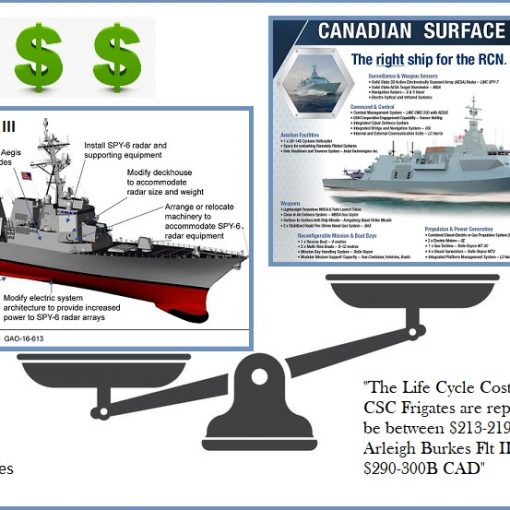I agree with much of Ken Hansen’s analysis. While we have indeed done badly at maintaining leading edge capabilities after purchase (note, however, exceptions of Halifax-class, CP-140, and CF-18 mid-life projects), I would not immediately accept your second point that the F-35 is entirely for conflict against a peer competitor. Most of our new equipment reflects a balance between meeting a the most likely threat while having just enough residual capacity to safely, if briefly, respond to the absolute worst case. I, personally, would not be happy as a pilot today over Libya's admitted degraded air defence network knowing my aircraft was acquired for conflict against lower rate, sub-peer competitors. I would want the 'edge' and I would think a G8 country should be able to afford some of that.
I also think it is incredibly difficult to identify what is the minimum needed if one chooses to counter what one might view as an non-peer or sub-peer competitor. Libya had literally hundreds of Russian air defence items and I recognized at least one SA8 and a few SA7s. These are dangerous and one cannot automatically assume that all one's opponents will be incompetent. Israel may have made that mistake in Lebanon and then suffered significant losses from very competently fired Hezbollah anti-ship and anti-tank missiles provided by, again, Russia with some from China.
I agree stealth is getting expensive. However, I think the same problem of accurately predicting what may occur in the future, and more critically when it will occur may be at work here. I state this in response to your suggestion that we delay stealth until "conflict is looming, in which case we should 'jump in with both feet." Given the average DND procurement decision takes 10 years to implement in peacetime and our woeful predictive powers (end of Cold War, 9/11 and the recent Arabic revolution) there is a problem here. Ships take even longer to deliver. Procurement decisions might move more quickly in wartime but so will the demand for the best systems from other states. See the Royal Canadian Navy in WW2. Further, if you do get those systems delivered 'just in time' your training won't catch up til much later.
In your third para you have described the potential range of naval futures with great skill. I also agree completely with the need for greater research. I am not sure, however, that we should go to small buys for concept development only. I think this government and future governments will do like past governments and select a low-thru-high capability mix in an attempt to cover all future bets within a limited defence budget. When the costs get too great, Canada, and most medium powers, get out of entire warfare areas. So the carriers, amphibious ships, and strategic bombers go. This keeps costs down at the cost of relying on others for those skills. This has worked so far.
As to the F35's potential impact on other needed capabilities including naval ones? My assessment, after writing much about the Canada First Defence Strategy, is that F35 funding will be held to the $16B and if costs rise the air force will have to accept lower numbers or cuts in other air capabilities. That is how the Conservatives handled the rising cost of the JSS and it's not a bad approach. As a result JSS was cut back in numbers and capability until it fit the amount budgeted. You could certainly critique that approach for handing too much authority to the military at the cost of Parliament, but it is a sure fire way of keeping costs in line with budget.
One could as well say, 'that is all fine as long as the Conservatives remain in power and DND's budget is not cut further.' If however, budgets are cut, the automatic reaction may be to eliminate or defer either F35s or ships or both. This would, however, be precisely the wrong thing to cut given the advanced age of our equipment. Moreover, the current defence plan for the next 20 years pays for new ships, fighters, and tanks with less than five percent of the defence budget. Total capital is only 11 percent of the budget. Meanwhile well over 40 percent of that budget goes to the support structure on our 28 plus bases and stations. You cannot cut aircraft, ships and vehicles without also cutting the immense support tail that allegedly supports them - unless your entire policy is focused on the immediate local politics of avoiding the attendant necessary base closures. All parties are complicit here.



